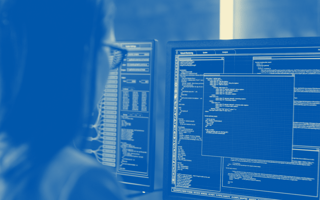If businesses weren’t accustomed to supporting remote workers before, odds are they received a crash course in recent months.
Importantly, many companies found out that some workflows of the physical office don’t neatly translate into a virtual one, which calls for adopting new tools — and getting rid of some old ones.
There is still a lot of work that can be done, though — especially for companies looking to bolster their remote IT infrastructure and button up their remote processes if working from home becomes the new, long-term normal.
Here’s how, with IT’s help, a remote workforce can be properly supported.
How IT Can Support a Remote Workforce
- Consider new workflows
- Optimize tech stack for remote
- Scale security hygiene
- Clarify device policies
Consider New Workflows
In a traditional office environment, you can tap your neighbor’s shoulder to ask a quick question, or duck into a conference room for a last-minute brainstorm.
In a remote setting, though, real-time collaboration is not easily replicated.
“The workflows that typically work in an office, in a co-located fashion, do not really map out into the remote-work culture,” Gonçalo Silva, chief technology officer at Doist, told Built In.
“The workflows that typically work in an office, in a co-located fashion, do not really map out into the remote-work culture.”
That’s why some companies, in the wake of stay-at-home orders, have considered adopting more asynchronous workflows. There’s no punching in or out, no expectation that employees will reply to messages immediately or chat in real time. But there is typically an extra emphasis on strict documentation and versioning.
Asynchronous workflows certainly take some getting used to — especially for teams that love communicating via Slack and spontaneously congregating by the water cooler. Ultimately, though, async workflows are meant to unlock more flexibility and keep communication clear and accessible to all.
But even businesses that don’t adopt asynchronous cultures probably need to revamp their workflows to accommodate the remote work reality.
Karl Vallner, chief technology officer at Brainbase, said his team had a complicated codebase. This was fine when engineers could swivel their chairs around to ask a colleague about it. But when they went remote in March, the team experienced delays and bottlenecks.
To remedy this, Vallner said, the company did three things: It established employee communication guidelines, heavily emphasized documentation and simplified its code base.
“We had tremendous success with this approach,” he said. “Our product iterations are going way faster, and there’s less bugs, and new engineers are onboarding significantly faster.”

Optimize Tools for New Workflows
Ian Pitt, chief information officer at LogMeIn, said his company’s employees still largely rely on tools like Microsoft Office 365 and Slack, which they used in the office, to get their day-to-day work done.
“What we have looked at doing, though, is bringing in whiteboarding tools so we can still continue to collaborate heavily in a very visual fashion,” Pitt said.
Whiteboarding tools — digital canvases that enable real-time collaboration while screen sharing — are redundant when employees can huddle together in a physical workplace. But it’s something to consider adding to the stack if remote work is here to stay.
Like video chat, digital whiteboards seek to replicate the feeling of working together in the same room. If companies embrace async culture, though, they also need to retool their stacks accordingly; simply continuing on with the same chat and video conferencing apps likely won’t cut it.
Doist relies on asynchronous workflows, and so its employees use Twist, a chat application with threads that are grouped by topic. Doist built Twist to enable more-structured, less-chaotic communication. The company also uses Dropbox Paper and a slew of other department-specific apps.
“A lot of these tools really enable asynchronous workflows and ways of communicating,” Doist’s Silva said, “and this is key for us because of the structure that we use.”
Igor Seletskiy, chief executive officer at CloudLinux, has also embraced async workflows. His team sometimes uses videoconferencing and Slack, but, overall, Seletskiy said, he encourages everyone to collaborate using tools like Jira, Confluence and Google Docs instead. That way, their synchronous tools and asynchronous workflows don’t have to compete against each other.
But Beware of Tool Bloat
While Seletskiy is wary of his team’s use of synchronous tools, he is hesitant to pull the plug on them altogether and introduce replacements for everyone to learn.
“One thing we’re actively trying to avoid is the proliferation of tools,” he said. “A lot of times, when a tool gets adopted by one group and not another, you have a silo.”
Seletskiy knows about this pitfall from experience. Some of his company’s departments use Jira, while others rely on Trello — for the same kind of work. He doesn’t want to introduce a new tool — even if it’s designed for asynchronous collaboration — if it will potentially lead to factions within the company.
“We want to experiment,” he said, “but we’re very careful.”
“When a tool gets adopted by one group and not another, you have a silo.”
Business leaders should make sure that various departments’ needs would be met by a tool before hastily adding it to their stack.
The remote transition is as good a time as any to cautiously try out new collaboration tools, but it’s also a moment to measure — and not renew licenses of — any applications that aren’t getting used.
Scale Security Hygiene
Some businesses rely on firewalls to protect the perimeter of the office, and have IT departments on hand to fix any issues that may arise. But when teams are scattered across different neighborhoods, cities and continents, such an arrangement is tough to replicate and scale. And now it’s made even more complicated by the mixed-use context of residential environments. This is where ongoing employee education comes in.
“We didn’t know that a number of people felt probably way too comfortable being at home, and started to drop their security standards,” said Pitt, the CIO of LogMeIn.
“People felt probably way too comfortable being at home, and started to drop their security standards.”
LogMeIn already had good security education in place, Pitt said, but it never really had to think about extending that education to the other individuals who may live with LogMeIn employees.
“Now you have an entire workforce working from home [and] sharing, potentially, resources with people who haven’t got that same attention to security,” he said. “So we went through and actually educated a much wider audience.”
Employees and their roommates or loved ones likely need a refresher on cybersecurity best practices, like securing their home networks with custom passwords and patched routers, and understanding how to spot phishing attacks.

Clarify Device Policies
Now is a good time for IT decision-makers to roll out a formal device policy, if they haven’t already.
Lots of remote companies take a bring-your-own-device (BYOD) approach. While this may save the company money, it carries additional security concerns; BYOD set-ups — which often see a mix of personal and professional use — are typically more difficult to monitor and provision, and more vulnerable to cyber attacks.
That’s why clear and easy-to-follow guidelines are necessary.
Employees at Doist use their own computers. The company gives each team member a stipend to buy whatever they need, but doesn’t enforce via provisioning or control what software employees install. To promote caution, though, Doist equips each employee with clear guidelines and protocols to follow as part of the onboarding process. They encourage employees to follow the guidelines and exercise good judgment.
If companies want to move away from a BYOD approach when they go remote, Seletskiy, the CloudLinux CEO, recommends they load up Chromebooks and ship them to employees.
“[Chromebooks] are very easy to deal with when remote,” he said. “It’s a great solution for when you don’t want to have bring-your-own-device-to-work issues.” Chromebooks come with built-in security, and IT can pre-install apps and bookmarks on them.
If a company insists on issuing its own computers to employees, then it’s a good idea to establish a formal process on how it will get them in the hands of new team members — and collect them from ones who leave.
Pitt had to think through this as LogMeIn’s 4,000-plus employees went remote in a matter of days. He said that LogMeIn proactively ramped up its “zero-touch processes,” by which it dropships laptops to new team members. Once new employees get these machines, they log into a portal and get a secure image, requiring very little input.
Pitt also added that teams should implement a return-to-base process as soon as possible, so that if team members leave, hardware retrieval is orchestrated seamlessly.




